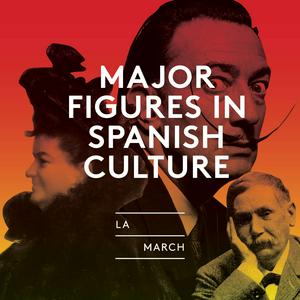9. Federico García Lorca
Federico García Lorca is Spain’s best known and perhaps most beloved poet of the 20th century. Born in 1898, Lorca formed friendships in Madrid with a pleiade of young creators in the 1920s at the Residencia de Estudiantes, al of whom would become very influential in Spanish culture. He was killed by Nacionalist forces at the beginning of the Spanish Civil War when he was only 38 years old. Christopher Maurer, professor or Spanish at Boston University introduces in this podcast this major figure in Spanish culture. Recording of Federico García Lorca’s ‘Pensamiento poético’ by Michael Alec Rose.Books and publications about Federico García LorcaHernández, Mario, Line of Light and Shadow. The Drawings of Federico García Lorca, Madrid, Tabapress-Fundación Federico García Lorca, 1990.Roberts, Stephen, Deep Song. The Life and Work of Federico García Lorca, London, Reaktion Books, 2020.Stainton, Leslie, Lorca. A Dream of Life, New York, Farrar, Straus, Giroux, 1999.Books and publications by Federico García LorcaPoetryCollected Poems, 2nd bilingual edition, revised. edition by Christopher Maurer, translation by Catherine Brown, Cola Franzen, Will Kirkland, William Bryant Logan, Robert Nasatir, Jerome Rothenberg, Greg Simon, & Steven F. White and Alan S. Trueblood, New York, Farrar, Straus, Giroux, 2013.Poet in Spain, translation by Sarah Arvio, New York, Knopf, 2017.Poet in New York, revised bilingual edition, translation by Greg Simon and Steven F. White. New York, Farrar, Straus, Giroux, 2013.Gypsy Ballads, translation by Jane Duran and Gloria García Lora, London, Enitharmon Editions, 2011.Sonnets of Dark Love/The Tamarit Divan, translation by Jane Duran and Gloria García Lorca, London, Enitharmon Editions, 2016.LecturesDeep Song and Other Prose, translation by Christopher Maurer, New York, New Directions, 1981.In Search of Duende, translation by Norman di Giovanni, Edwin Honig, Langston Hughes, Lysander Kemp, C. Maurer, W.S. Merwin, Stephen Spender and J.L. Gili, New York: New Directions, 1998.LettersSelected Letters, translation by David Gershator, New York, New Directions, 1984.Federico García Lorca and Salvador Dalí. Sebastian’s Arrows. Letters and Mementos, translation by Christopher Maurer, Chicago, Swan Isle Press, 2004

